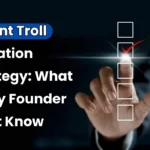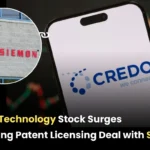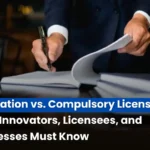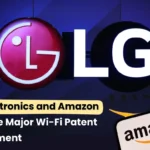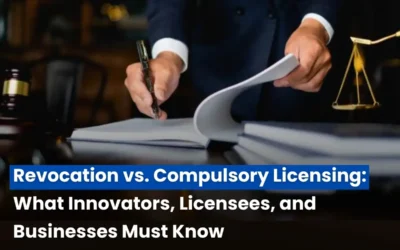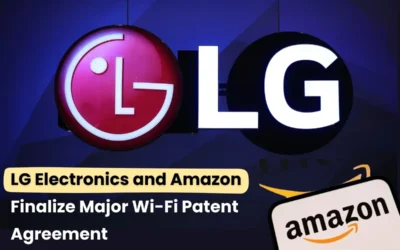
Patents are highly valuable commodities that can be tagged with significant amounts of money. It is really very hard to find a buyer in the global market, unless it’s sold to another inventor or a company that will purchase and exploit an invention or idea. This guide describes step by step the things you will do to find patent buyers globally, including methods for global outreach and has practical tips so that one can have a better chance of success.
The Patent Market
Before going any further and explaining how to sell a patent, the market for a patent needs to be understood. A patent is an intellectual property right given to the owner of the patent right to make, use, or sell an invention for some years. However, the patent is valid for 20 years. In the real world, however, what really matters in a patent has more to do with the potential for turning it into revenue-generating mechanisms like licensing or even outright selling of a patent.
This type of patent purchaser would be as follows-derived market segments. They include:
- Technology Companies: To add value to their product lines through innovation or to augment the quality of technology.
- Manufactures: Auto, health care, electronics, and other such industries are represented by leading-edge technologies.
- Investors and patent aggregators: These are entities that buy patents for portfolios for sale or licensure to third parties.
- Start-ups and entrepreneurs: Small businesses or inventors that need a patent to attach it to their product or service.
Bottom Line
- Market Demand: Your patent need must address some form of market demand or have an application.
- Novelty: Your patent should be innovative and obvious. That should rattle the markets.
- Patent Quality: Your patent needs to be well drafted, detailed, and legally tenable in many jurisdictions.
- Finding Global Buyers for Your Patent:After getting a good feel of the market, it is time to get into action by attracting buyers.
Here’s how to find patent buyers on the global level:
1. List Your Patent on Online Marketplaces
You have the opportunity to find patent buyers globally through online marketplaces. It connects the inventor to the potential buyer. Easy access to fast and smooth functioning during the buying and selling process. The most known patent marketplaces are Patent Monetize where you can list your patent and explore for possible options for licensing purpose.
List your patent while using short descriptions that seed the description with keywords. Hail the commercial value of your invention and bring along some statistics or case studies to help them list the merits.
2. Contact Patent Brokers
This means that a patent broker is the intermediary between the patent owner and the buyer. In most instances, they know the patent buyers such as investment firms, large corporations, as well as small companies searching for new technologies. If you are to hire a patent broker, you will end up saving so much time and energy while being paid a great price for your patent.
3. Industry Events and Exhibitions
Additional avenues through which one would reach the potential customers are industry exhibitions, patent-related events, among others. One of the outlets where one can present in front of the decision-makers of some of the globe’s leading investment firms and organizations is through some of these above-mentioned industries’ events and exhibitions. Prominent among the above events and exhibitions are
- INTA Annual Meeting- International Trademark Association
- CES (Consumer Electronics Show)
- IPBC Global – Intellectual Property Business Congress
In addition, patent-specific forums and internet communities would introduce you to people who can be interested in your technology, and you will connect with other professionals on such platforms as on LinkedIn and particularly on these forums specializing on patents on the Patents Post Grant, as there are also people who literally know the capabilities of patents. And network amongst them.
4. Seek Direct Contact from Potential Buyers
Sell your patent proactively to the potential buyers. So, research all the companies in your niche and try to find out if they have a requirement to purchase your patent. Prepare a nice pitch on the value that your patent avers and how it will fit in their business model. Tailor your message for each company and be prepared for communication follow-ups.
Some of the other great buyer categories that might prove pretty lucrative are the following:
Of course, all the technology companies would require new or novel technologies. Manufacturing companies which would actually produce the patented commodity. Companies acquiring patents typically invest in the rights to those patents for later licensing, or for selling off those rights.
Licensing As A Strategy
You cannot sell your patent always outright. The best alternative of selling the patent is licensing your patent. Licensing means that you have ownership of the patent while gaining revenue continually, generated from royalties in the form of licensing fees. You may offer exclusive or non-exclusive licenses according to strategy and goals that you may pursue.
- Exclusivity License: The rights to use your patent in a particular market or geography are exclusively with the buyer.
- Non-exclusivity License: Several firms can use your patent at the same time but in various markets or geographies.
Evaluating the Value of a Patent
The amount that the buyer pays you in exchange for your patent that amount is the real value of your patent. Patent valuation in any form is not easy; it involves various considerations into the equation:
- Market Potential: How much demand you have in the particular market for your patent.
- Patent Strength: The strength of a patent is determined by its scope, its novelty, and how enforceable it is under the law.
- Licensing Potential: You may calculate how much you can reap from licensing your patent.
- Comparable Sales: Identify comparable patents and determine how much they have sold or licensed for.
A patent valuation expert may be needed in order to set a fair asking price. The more accurate your patent price is the more buyers will likely be serious
Marketing Your Patent to Global Buyers
Strategic marketing is the best way to attract a potential buyer. Other than listing the patent at a few marketplaces, making it more noticeable through social media marketing, like that, as follows can reach the potential buyer for assistance:
- Social Media Marketing: Advertise the patent on LinkedIn, Twitter, and Facebook; contact industry professionals.
- Content Marketing: Few blog articles or articles explaining the advantages this patent provides.
- Partner with Patent Aggregators and IP Firms: Companies that buy patents in bulk are always looking for good intellectual properties to add to their portfolios. Reach out to these companies to see if they are interested in purchasing your patent.
Legal Issues in Selling Your Patent
Selling or licensing a patent is a legal process that requires the drafting of contracts and agreements. It’s essential to have legal representation to ensure that the terms are fair and that your intellectual property is protected.
Drafting a Sale Agreement
When selling your patent, you’ll need a comprehensive agreement that outlines:
- The price and payment terms.
- Transfer of ownership rights.
- The territorial restrictions of a patent.
- Warranties and indemnities clauses.
Licensing Agreement
If licensing is your preferred option, then the agreement must include the following aspects:
- Scope of use
- Duration of the agreement
- Royalty rates and terms of payment
- Geographical and market limitations.
Conclusion
You would then get a buyer for your patent through strategic planning, networking and promotion in the global market. This can be in the online platforms or patent brokers among others. At times, you attend industry events where you get in contact with people who buy a patent directly. Through this, you increase the possibilities selling or licensing it to the right buyer. Last but not least, ensure to calculate the value of the patent and advice one on the proper legal approach as it will go to protect their intellectual property.
